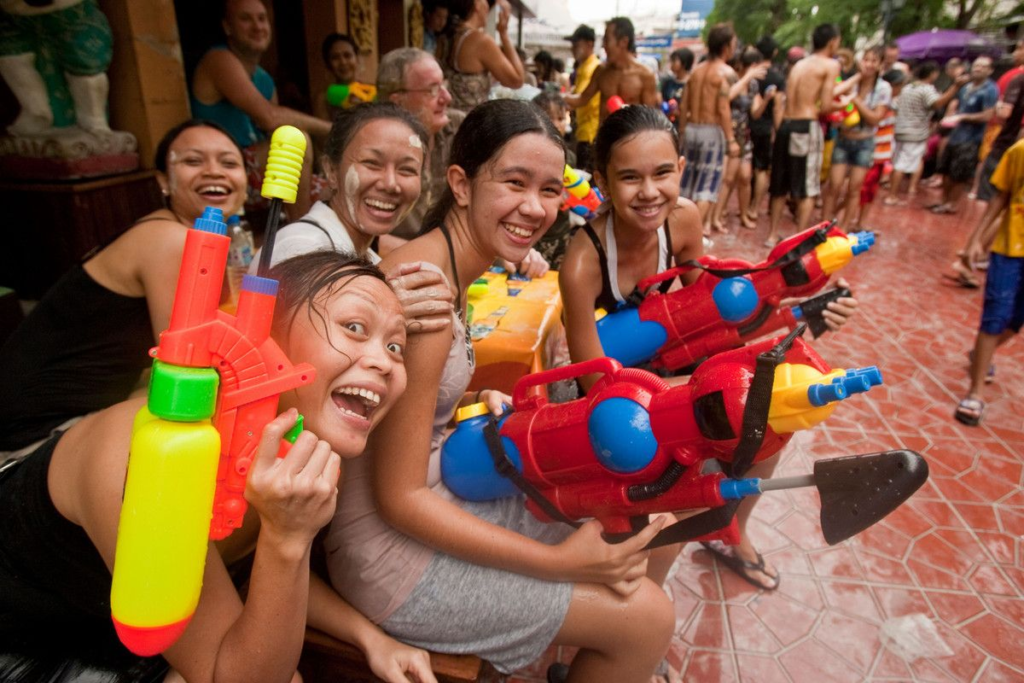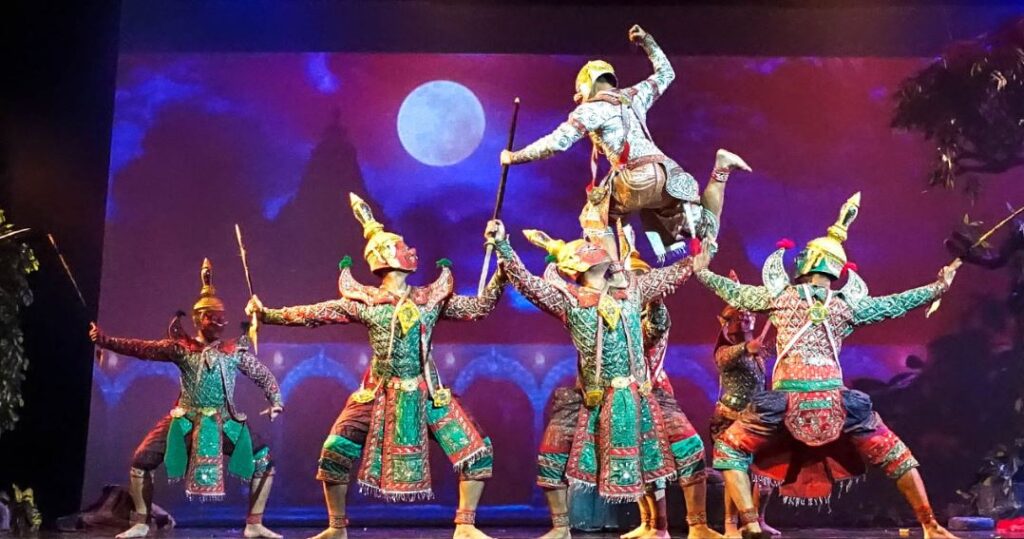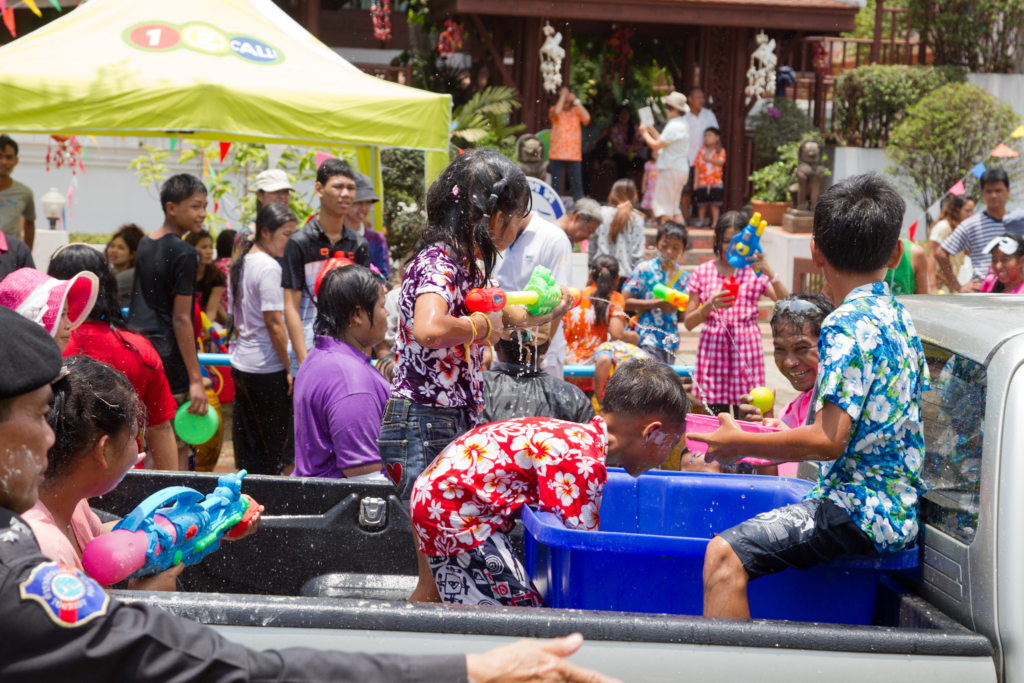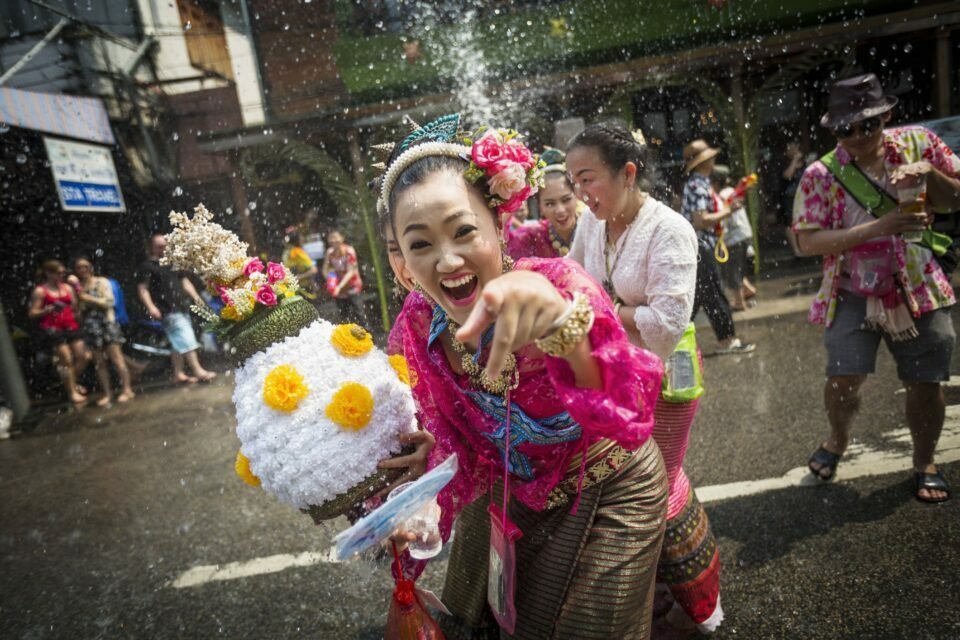Everyone can be one of the blind guys searching for the shape of the elephant that is Songkran. It becomes a nightmare event for rescue workers or relevant authorities due to traffic accidents. In rural places, elderly people wait down the days until they can see their cherished children once more. Teenagers yearn to play more rough with the other sex. Foreigners long to have fun.

The Songkran event has been given the go-ahead to be added to the preliminary list of Intangible Cultural Heritages (ICH) for consideration in December of this year. On one hand, it makes sense as to why. On the other hand, it can be challenging to identify the cultural or aesthetic principles that give Songkran a distinct advantage over, say, other exotic performances that attract tourists to Thailand or other countries.

Naturally, in 2018, 2019, and 2021, respectively, UNESCO designated the “Khon”mask dance, Thai massage, and the Nora dance performance as Intangible Cultural Heritages. “Khon” performs better than Songkran because there isn’t a distinct Songkran dance. Nora and “Khon” are identical. Thai massage is well-known across the world, but try asking elderly people to pick between the “best of the best” masseuses’ services and the inexperienced kneading of their grandchildren who moved to Bangkok to work.
ICH prizes frequently feature works that are beautifully artistic and highlight local knowledge or abilities that are not widely known. For instance, in Turkey’s Karagöz, figurines known as tasvirs fashioned from camel or cow leather and shaped like people or objects are carried on rods and held in front of a light source to cast their shadows onto a cotton screen. While it’s not difficult to understand why some local songs, performances, and works of art are recognized internationally, Songkran neither provides nor inspires any of those.
Alcohol can be used to fuel Songkran dances in general, and there isn’t much special about them. Foreigners associate Songkran with the Khao San Road, not with events that are particular to their culture. Sandcastles? Children’s creations on beaches around the world can be just as beautiful.
It’s challenging to single out one specific aspect of Songkran as “This is the face of Songkran” because the festival juxtaposes so many different things. Water splashing may be what many people picture when they think of this time, but in reality, it only encompasses a small portion of it. Perhaps the celebration includes water since April is such a hot month. Throwing water is also not particularly impressive in terms of culture or the arts.
On the day of Holi, or India’s Festival of Colors, people fling colored powder into the air and splash it on strangers, turning entire streets and cities crimson, green, and yellow. Even the colors have meanings. For instance, the color red represents fertility and love.
Making merits? Practically every month, Thais accomplish great feats. During Songkran, they merely add statues of the bathing Lord Buddha. In terms of culture, nothing noteworthy happens in the temples. Quite a few individuals visit there.
Foods are the same, with hot summer foods added for people to eat whether or not it is Songkran. The concept of “Songkran foods” does not exist. All a grandmother really does is fry some eggs the way her visiting grandson used to like them. For the grandmother, that is Songkran.
Although floral shirts were common at the time, they should never be mistaken for the required attire. People wear it just to feel festive and because it’s attractive. There isn’t a Songkran costume. Nobody will notice if you walk out in regular shorts or jeans and a T-shirt.

No such thing as a “Songkran card” exists. Children returning home don’t need to bring anything, and those waiting for them at home should also expect the same. Booking transportation tickets and navigating crowds at bus stations are skills that do require some expertise, but they are not exceptional abilities deserving of a global honor.
But it’s important to give the elders garlands and wash their hands with reverence. It keeps the ties strong. Some believe it to be “more Songkran” than just throwing water at large groups of young people.
The UN organization UNESCO says that cultural heritage is more than only monuments and artifact collections on its website. According to this definition, cultural heritage must also include practices and living expressions that have been passed down from our ancestors to our descendants. Examples include oral traditions, performing arts, social customs, rituals, holiday celebrations, and knowledge and customs relating to nature and the cosmos.
Something so significant is passed on at Songkran. That much is known to us, the blind researchers. It explains why there are no people on the streets of Bangkok during the festival, despite the fact that everyone is completely drenched from head to toe and their clothes are soaking.
One can question why it took UNESCO so long to establish some of the ideals of this era, when things could even get insane in some places.




